Ready to make some raisins dance?? Although you won’t need to buy them dancing shoes, once you give your raisins some soda pop, they’ll start dancing for you with every bubble!
In this easy science experiment, your young scientists will learn about the effects of density and buoyancy. Below you will find a demonstration video, a supply list, and printable instructions. Suitable and fun for all ages.
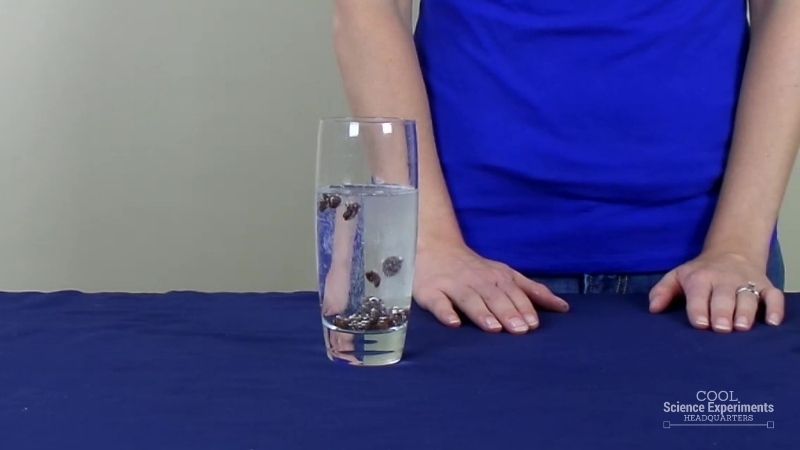
JUMP TO SECTION: Instructions | Video Tutorial | How it Works
Supplies Needed
- Clear Drinking Glass
- Clear Pop like Sprite or 7Up
- Raisins
Dancing Raisins Science Lab Kit – Only $5
Use our easy Dancing Raisins Science Lab Kit to grab your students’ attention without the stress of planning!
It’s everything you need to make science easy for teachers and fun for students — using inexpensive materials you probably already have in your storage closet!
Dancing Raisins Science Experiment Instructions
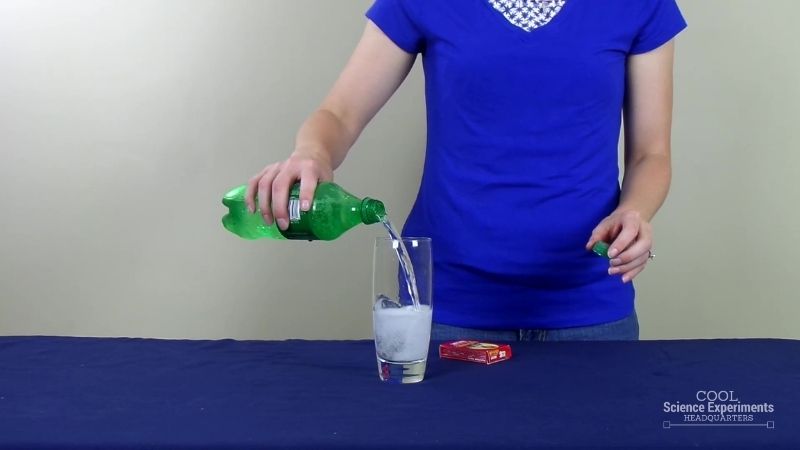
Step 1 – Gather your materials together and begin by pouring the pop into the cup. Pour until it is about 3/4 of the way full.
As you are pouring the pop, take a moment to make observations. What did you notice as you poured the pop into the cup? Did you see anything interesting happen? Did you hear anything as you poured the pop into the cup?
What do you think will happen if you place the raisins into the cup? Write down your hypothesis (prediction) and then continue the experiment to test it out and to find out if you were correct.
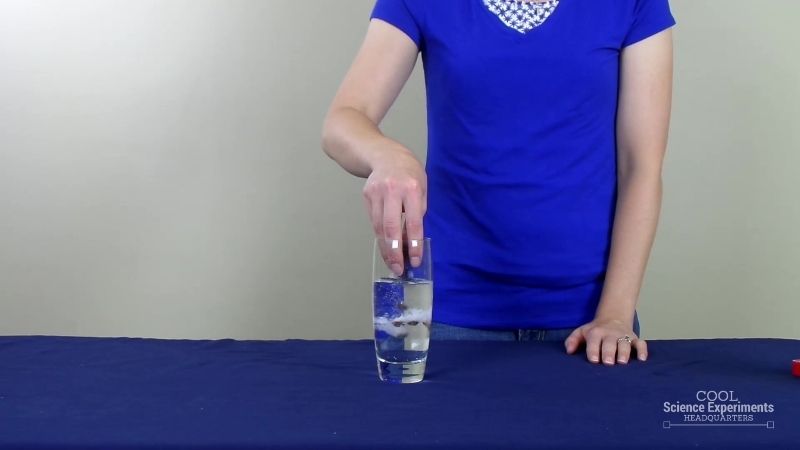
Step 2 – Next, take a handful of raisins (approximately 10-15) and carefully place them into the cup. Then take a step back and look through the side of the cup to watch what happens.

Step 3 – What initially happened to the raisins? Did they sink to the bottom? Did they float to the top? As you observe the cup for a few minutes, did anything else happen? Was your hypothesis correct?
Do you know what caused the raisins to “dance” and move up and down in the pop? Find out the answer in the how does this experiment work section below. It also contains ideas on how you can expand on the experiment.
Dancing Raisins Science Experiment Video Tutorial
Watch the Dancing Raisins Science Experiment Step by Step Instructions
How Does the Science Experiment Work?
When you first place the raisins in the soda, the raisins sink because they are denser than the soda. As the carbon dioxide gas bubbles dissolved in the soda attach to the wrinkled surface of the raisins, the raisins begin to rise. The raisins rise because the soda bubbles help increase the buoyancy of the raisins.
Buoyancy is the tendency of an object to float in fluids because of the upward force fluid exert on objects.
This increase in buoyancy helps the raisins become less dense than the soda. When the raisins get to the surface of the soda, the carbon dioxide bubbles surrounding the raisins pop. The raisins lose buoyancy and become denser than the soda so they begin to sink. As the raisins sink, more carbon dioxide bubbles will attach to the raisins’ wrinkled surface, starting the process all over again!
The raisins will continue to dance (sink and float) in the soda until all of the carbon dioxide bubbles have popped and the soda becomes “flat”.
Dancing Raisins Science Lab Kit – Only $5
Use our easy Dancing Raisins Science Lab Kit to grab your students’ attention without the stress of planning!
It’s everything you need to make science easy for teachers and fun for students — using inexpensive materials you probably already have in your storage closet!
More Science Fun
Try this same experiment with objects that do not have a wrinkled surface like blueberries or grapes. Do they rise in the soda the same way the raisins did?
Instead of using soda like 7Up or Sprite, try using baking soda dissolved in water and vinegar. Dissolve two teaspoons of baking soda into a half cup of water. Add 6-7 raisins to the baking soda/water solution. Slowly pour a tablespoon of vinegar into the mixture and watch the raisins dance! (This version of the experiment could make a mess, so put your cup into a shallow dish, like a pie pan, before adding the vinegar).
I hope you enjoyed the experiment. Here are some printable instructions:
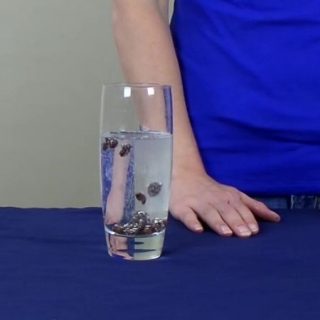
Dancing Raisins Science Experiment
Materials
- Glass Drinking Glass
- Clear Pop like Sprite or 7Up
- Raisins
Instructions
- Fill the drinking glass with pop
- Put in a handful of raisins
- Watch the raisins “dance” and move up and down in the glass.
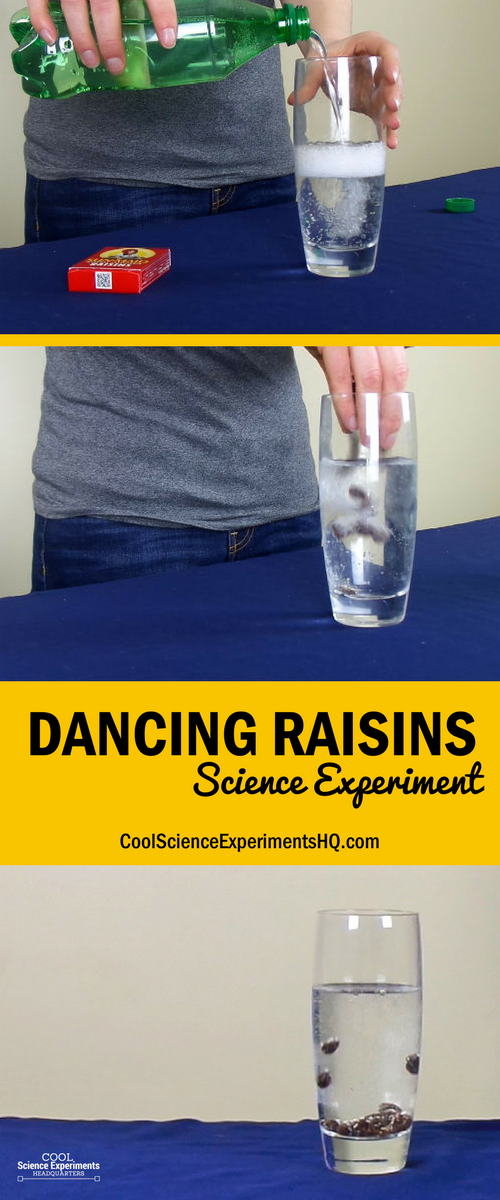
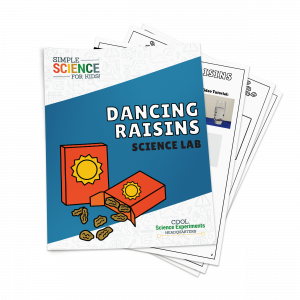

What if you add more soda? What’s going to happen to the raisins?
That’s a great question! Why not test it and observe what happens to the raisins. If you do, comment and let us know what you find!